- Did you know that smart thermostat technology can reduce your heating and cooling costs by up to 23% annually? Discover how upgrading your home with the latest smart thermostats is one of the most effective steps you can take to lower energy bills and support a sustainable lifestyle.
Unlocking Savings: How Smart Thermostat Technology Impacts Your Energy Bills
Thanks to advances in smart thermostat technology , homeowners can now manage their energy usage more precisely than ever before. Smart thermostats allow you to control heating and cooling systems using an app on your phone or through other smart home platforms. The data-driven intelligence in these thermostats means they can learn your routine, automatically adjust to your preferences, and even sense when no one is home. According to ENERGY STAR®, this technology can reduce heating and cooling costs by up to 23% annually, putting money back in your wallet and supporting the environment through reduced energy consumption.
Real-world case studies underscore these benefits. In a 2023 study, households switching to smart thermostats saw average savings of $131 to $145 per year on their energy bill. Compared to a manual thermostat or even a programmable thermostat, smart thermostats offer far more user-friendly controls and real-time feedback, encouraging smarter energy choices. Unlike traditional programmable thermostats, which often go unused because they are complex to set up, a smart thermostat makes saving energy as simple as opening an app or issuing a voice command.
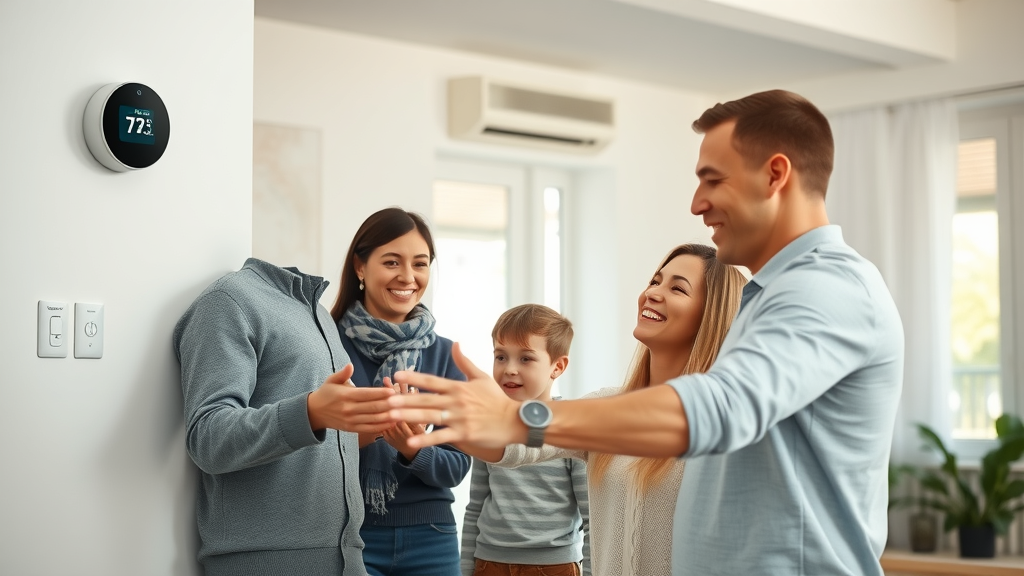
- Explore real-world statistics and case studies showing the cost-saving power of smart thermostat technology for homeowners. Compare smart thermometers with traditional programmable thermostats in terms of efficiency and usability.
What You'll Gain from Understanding Smart Thermostat Technology
- How smart thermostat technology works and integrates with your existing HVAC system
- The unique advantages of smart thermostats vs. manual or programmable thermostat models
- Steps to optimize energy efficiency throughout your smart home
- Practical guidance for choosing, installing, and using smart thermostats
The Evolution of Smart Thermostat Technology: From Manual to Connected Homes
Manual Thermostats, Programmable Thermostats, and the Smart Revolution
Manual thermostats once dominated home temperature control, requiring you to physically adjust the dial or lever each time you wanted to change settings. These offered no energy-saving automation—instead, your energy bill depended entirely on your memory and consistency. The introduction of the programmable thermostat marked a major upgrade, letting users schedule daily heating and cooling routines. Although more convenient, many programmable thermostats proved difficult to operate, and homeowners rarely maximized their potential.
The era of smart thermostat technology began with devices like the Nest learning thermostat. These models automatically adjust the temperature based on your schedule, weather changes, and occupancy patterns. Modern smart thermostats leverage AI-powered learning, integrating seamlessly with your smart home devices and HVAC system to efficiently manage your desired temperature, save energy, and reduce operating costs without any guesswork.
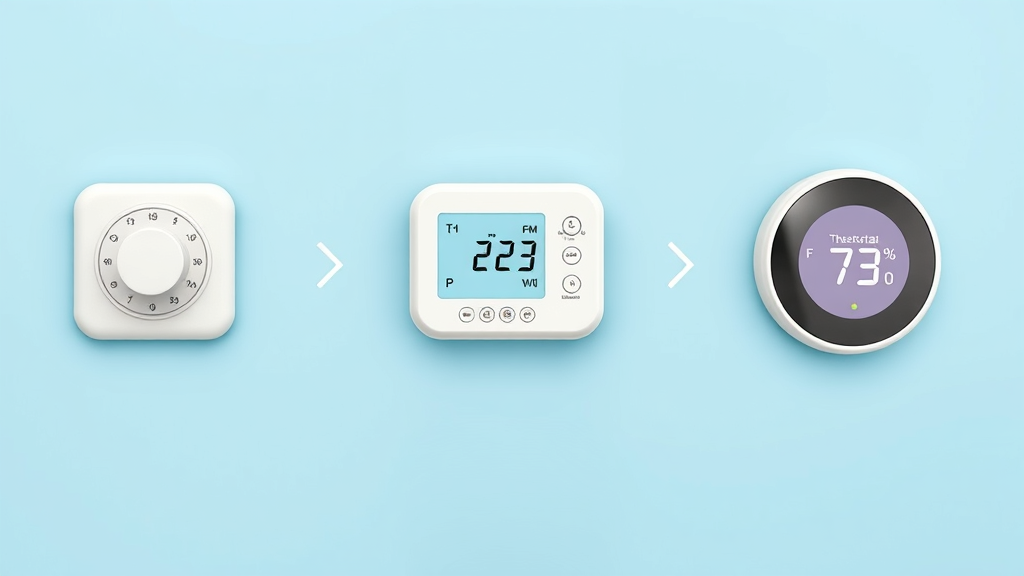
- Timeline of thermostat advances
- Differences between manual thermostat, programmable thermostat, and modern smart thermostats
- The rise of learning thermostat functions and AI-powered energy adjustments
How Smart Thermostats Work: Core Features and Technology Explained
WiFi Connectivity and Remote Access in Smart Thermostat Technology
One of the defining features of smart thermostat technology is its ability to connect seamlessly to your home’s WiFi network. This connectivity enables you to control the thermostat remotely using an app on your phone, tablet, or even through voice commands via Google Home or Alexa. Whether you’re at work or on vacation, you can adjust the temperature in real-time, maximizing energy efficiency and home comfort without having to be physically present. This is especially convenient during sudden weather changes or unexpected schedule shifts.
Smart thermostats connect with a range of other smart home devices, allowing coordinated automations and routines. Security is a top priority, with most manufacturers encrypting data and offering regular firmware updates to protect against vulnerabilities. However, because an internet connection is required, a stable WiFi network is essential for uninterrupted remote access and real-time monitoring. When properly secured, these features transform your HVAC system management and create new opportunities to save energy, reduce costs, and increase convenience.
- How smart thermostats connect with mobile devices and smart home systems
- Remote programming and monitoring
- Security and privacy considerations
Learning Thermostat Capabilities and AI-driven Efficiency
Learning thermostats go beyond basic programming by leveraging sensors, algorithms, and artificial intelligence to learn your household’s schedule and preferences. Over time, your thermostat analyzes when you’re home, asleep, or away, then customizes the heating and cooling schedule to match, without you having to manually adjust the thermostat. By automatically adjusting to your preferred settings, smart thermostats can eliminate wasted energy when spaces are unoccupied and ensure optimal comfort when needed.
This technology coordinates closely with your HVAC system , optimizing both heating or cooling cycles for maximum savings. Many models, such as the Nest learning thermostat, can achieve Energy Star certification, meaning they meet strict energy efficiency guidelines set by the U.S. Environmental Protection Agency. When integrated with other smart home systems, these devices can further enhance energy savings by building scenes or routines that respond to occupancy, time of day, and weather data for smarter energy management.
- How smart thermostats learn occupancy and temperature preferences
- Integration with hvac systems and automatic schedule adjustments
- Leveraging Energy Star certification for higher savings
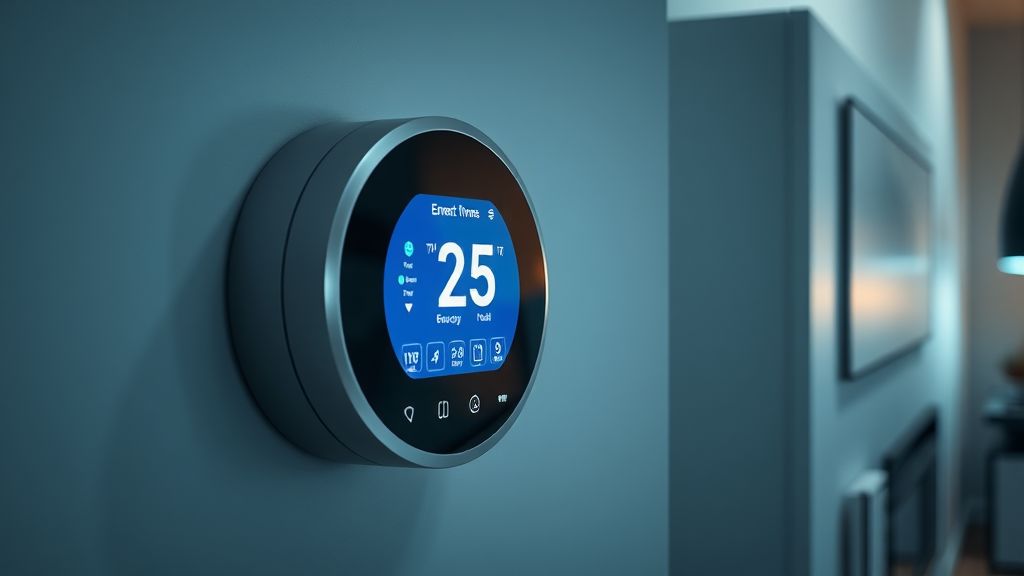
Comparing Smart Thermostats vs. Programmable Thermostats: Which Is Right for You?
| Feature | Programmable Thermostat | Smart Thermostat Technology |
|---|---|---|
| Core Function | Set and follow fixed heating/cooling schedules | Adaptive schedules, automatic adjustments, and learning |
| Remote Access | No | Yes, via mobile app or smart home devices |
| Integration with HVAC, Air Conditioner, Heat Pump | Manual programming only, limited system compatibility | Wide compatibility, automatic optimization |
| Cost | Lower initial cost | Higher initial cost, greater savings over time |
| User Experience | Basic interface, limited control, can be confusing | Intuitive controls, voice and app integration, personalized schedules |
| Energy Savings | Up to 10% reduction (with consistent use) | Up to 23% reduction (with learning and automation) |
Smart Thermostat Technology and Energy Efficiency: Measuring the Benefits
Choosing a smart thermostat with an Energy Star rating ensures it meets strict energy efficiency and performance standards. These certified devices have been independently verified to help reduce energy consumption without sacrificing comfort. By intelligently managing both heating and cooling operations, smart thermostats support energy star initiatives and make it easier to save energy every day.
Statistics speak volumes: Homes using smart thermostats regularly experience a significant decrease in energy usage. This not only results in lower energy bills but also contributes to a smaller environmental footprint—reducing reliance on natural gas or excessive electricity for air conditioning and heating. Smarter energy management is a win for families seeking to save money and promote sustainability.
Energy Star Ratings and Their Role in Smart Thermostats
- What to look for in an Energy Star thermostat
- Potential reductions in energy usage statistics
- Environmental impact of smarter energy management
“Energy efficiency is not just about saving money—it’s about making smarter, more sustainable choices for our planet.” — Energy Efficiency Expert
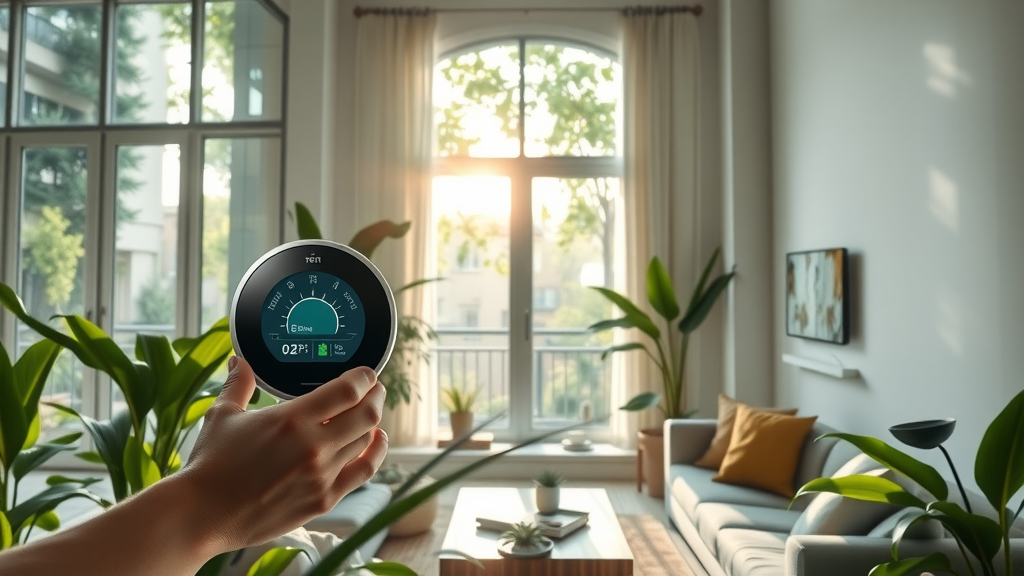
Best Practices: Installing and Setting Up Smart Thermostat Technology in Your Home
Installing smart thermostat technology can be a straightforward process, but attention to detail ensures optimal performance. Start by turning off the power to your HVAC system and removing your existing thermostat. Label the wiring, especially the common wire if yours is present, to simplify installation. Most modern smart thermostats include easy-to-follow instructions, video tutorials, and mounting hardware suitable for standard wall plates.
It’s important to ensure compatibility with your home’s hvac system , heat pump, or air conditioner. Connect the thermostat to a reliable WiFi network to enable app pairing and remote operation. Once installed, the intuitive setup walk-through guides you to connect to your preferred app on your phone or smart home ecosystem. Test all system modes—heating, cooling, fan—before completing setup. If you encounter difficulties, many brands offer dedicated support or professional installation services for seamless integration.

- Step-by-step installation guidance
- Key considerations for integrating with a heat pump , air conditioner, or diverse hvac system
- Ensuring strong WiFi connection and app pairing
Smart Home Integration: Leveraging Smart Thermostat Technology for Maximum Savings
Integrating smart thermostat technology into your broader smart home unlocks powerful new ways to boost efficiency and comfort. Many modern thermostats connect seamlessly to voice assistants like Google Home and Alexa, allowing you to adjust the temperature, set schedules, or even initiate energy-saving scenes with a simple command. Automating comfort settings according to occupancy or external weather data ensures your energy usage is closely aligned to your real needs, further driving down energy bills.
Building dynamic “scenes” or “routines” is another core advantage of smart home integration. For example, you can have your thermostat lower the heat when you leave for work and ramp it up before you arrive home. Linking other smart devices—such as fans, blinds, or air purifiers—can increase energy efficiency and enhance your comfort. The best results come from careful planning and regular adjustments based on real data, a process made far simpler thanks to smart thermostat automation and app-enabled insights.
- Linking your smart thermostat with other smart home devices
- Automation and voice control with platforms like Google Home and Alexa
- Building scenes and routines for automated comfort
Smart Thermostats and HVAC System Maintenance: Ensuring Longevity and Performance
One often-overlooked benefit of adopting smart thermostat technology is its role in extending the life of your HVAC system. Many smart thermostats monitor your system’s activity and send preventative maintenance reminders directly to your app or email. This proactive approach can alert you to clogged filters, unusual runtime patterns, or the need for seasonal tune-ups before minor issues become expensive repairs. Regular maintenance ensures both optimal energy efficiency and a longer operational life for your heating or cooling equipment.
Additionally, smart thermostats track and record HVAC usage patterns, allowing you to spot inefficiencies or opportunities for further energy savings. Troubleshooting is simplified, as the device often logs error codes and notifies you of connectivity or sensor problems. By empowering homeowners to stay one step ahead, smart thermostat technology is a crucial partner in maintaining consistent home comfort while avoiding unnecessary energy costs and system wear.
- Using a smart thermostat for preventative maintenance reminders
- Monitoring usage patterns to extend the life of your hvac equipment
- Troubleshooting common connectivity and sensor issues
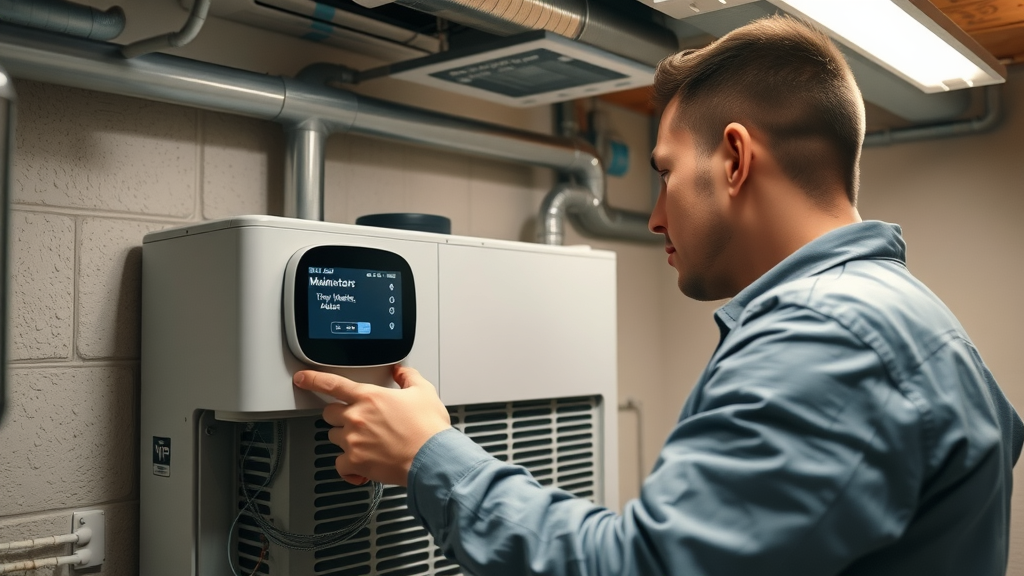
Navigating the Market: Top Smart Thermostat Technology Brands Reviewed
- Key product features, compatibility, and pricing
- Notable learning thermostats and Energy Star rated models
- User reviews and performance ratings
- Top 5 Smart Thermostats of the Year
- Google Nest Learning Thermostat – Adapts to your schedule, strong energy savings, wide compatibility
- ecobee SmartThermostat – Built-in voice assistant, remote sensors, excellent smart home integration
- Honeywell Home T9 – Smart room sensors, intuitive display, flexible system compatibility
- Emerson Sensi Touch – User-friendly interface, reliable performance, affordable pricing
- Wyze Thermostat – Budget-friendly, simple smart features, app-centric controls
- Features, Pros, and Cons Comparison
- Nest Learning: Best for learning capabilities but higher upfront cost
- ecobee: Exceptional smart home integration, premium features
- Honeywell T9: Good compatibility, moderate price
- Sensi Touch: Easy to use, classic design, reliable updates
- Wyze: Affordable, basic smart features, suitable for simple systems
People Also Ask: Addressing Common Questions About Smart Thermostat Technology
Is there a downside to smart thermostats?
- While smart thermostat technology offers significant benefits such as energy efficiency and remote control, potential downsides include higher upfront cost, compatibility challenges with older HVAC systems, and reliance on a stable WiFi connection.
How does a smart thermostat differ from a regular thermostat?
- A smart thermostat provides enhanced automation, learning capabilities, and remote access—unlike manual thermostats or most programmable thermostats. It can adapt to user habits over time for improved energy savings.
Can a smart thermostat replace any thermostat?
- In most cases, smart thermostat technology can replace manual thermostat or programmable thermostat units, but compatibility with specific HVAC and wiring configurations should be checked before purchase.
How do smart thermostats connect to the internet?
- Most smart thermostats use WiFi to connect to your home network, enabling remote access via mobile apps and integration with other smart home systems.
FAQs on Smart Thermostat Technology
- Can smart thermostats control both heating and cooling? Yes, most smart thermostats can manage both functions, controlling your furnace and air conditioner, or even a heat pump, for year-round comfort and efficiency.
- What is geofencing in smart thermostat technology? Geofencing uses your smartphone’s location to automatically adjust your home’s temperature when you’re arriving or leaving, further boosting energy savings .
- Does a smart thermostat work with all hvac systems? While compatibility is broad, it’s crucial to check wiring and system type—especially if you have older or unique setups.
- How much energy can be saved annually with a smart thermostat? Research suggests 10–23% savings on average annual heating and cooling costs, depending on usage and system efficiency.
- Is it difficult to install a smart thermostat yourself? Many homeowners can complete the installation in under an hour using the provided guides and apps, but professional support is always available if needed.
Expert Insights: What You Should Know Before Investing in Smart Thermostat Technology
"Investing in smart thermostat technology is like giving your home a brain for energy savings—just make sure it’s the right fit for your lifestyle and HVAC system." — Home Automation Specialist
Making the Switch: Key Takeaways for Upgrading to Smart Thermostat Technology
- Review of financial and environmental benefits
- The importance of compatibility with existing HVAC system
- Steps to seamless installation and integration in your smart home
Start Saving Instantly: Embrace Smart Thermostat Technology for a Greener, More Affordable Future
- Ready to cut your energy costs and improve your home comfort? Invest in smart thermostat technology today and start experiencing the difference in efficiency and sustainability.
Upgrade to smart thermostat technology now to start saving money, optimize energy usage, and make your home more comfortable—all while supporting a sustainable future.
Sources
- Energy Star – https://www.energystar.gov/products/smart_thermostats
- Google Nest – https://nest.com/thermostats/meet-nest-thermostat/
- ecobee – https://www.ecobee.com/en-us/smart-thermostats/
- Honeywell Home – https://www.honeywellhome.com/us/en/products/thermostat/
- Energy.gov – https://www.energy.gov/energysaver/programmable-thermostats
To further enhance your understanding of smart thermostat technology and its benefits, consider exploring the following resources:
-
Smart Thermostats | ENERGY STAR provides comprehensive information on ENERGY STAR-certified smart thermostats, detailing their features, energy-saving capabilities, and guidelines for selecting the right model for your home.
-
Benefits of Smart Thermostats | Should I Get a Smart Thermostat? outlines the advantages of installing a smart thermostat, including energy tracking, remote control, and ease of programming, helping you make an informed decision about upgrading your home’s climate control system.
If you’re serious about optimizing your home’s energy efficiency and comfort, these resources will provide valuable insights and guidance.
 Add Row
Add Row  Add
Add 




Write A Comment